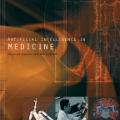Humans are naturally endowed with the ability to write in a particular style. They can, for instance, rephrase a formal letter in an informal way, convey a literal message with the use of figures of speech, edit a novel mimicking the style of some well-known authors. Automating this form of creativity constitutes the goal of style transfer. As a natural language generation task, style transfer aims at re-writing existing texts, and specifically, it creates paraphrases that exhibit some desired stylistic attributes. From a practical perspective, it envisions beneficial applications, like chat-bots that modulate their communicative style to appear empathetic, or systems that automatically simplify technical articles for a non-expert audience. Style transfer has been dedicated several style-aware paraphrasing methods. A handful of surveys give a methodological overview of the field, but they do not support researchers to focus on specific styles. With this paper, we aim at providing a comprehensive discussion of the styles that have received attention in the transfer task. We organize them into a hierarchy, highlighting the challenges for the definition of each of them, and pointing out gaps in the current research landscape. The hierarchy comprises two main groups. One encompasses styles that people modulate arbitrarily, along the lines of registers and genres. The other group corresponds to unintentionally expressed styles, due to an author's personal characteristics. Hence, our review shows how the groups relate to one another, and where specific styles, including some that have never been explored, belong in the hierarchy. Moreover, we summarize the methods employed for different stylistic families, hinting researchers towards those that would be the most fitting for future research.
翻译:自然而然地赋予人类以特定风格写作的能力。 例如,他们可以以非正式的方式改写正式信件,通过使用语言数字传达字面信息,用语言数字表达字面信息,编辑模仿一些著名作者的风格的新书。 将这种创作形式自动化是风格传输的目标。 作为自然语言生成的任务,风格传输的目的是重写现有文本,具体地说,它创建了能够显示某种需要的文体特征的引言句。从实际角度,它设想了有益的应用,例如调整其交流风格的聊天机,以显示同情性,或者自动简化非专家读者的技术文章的风格。 风格转换是专门用几种风格觉悟的翻版方法。 少数调查提供了对域的方法学概览, 但是它们并不支持研究人员专注于特定的风格。 有了这份文件,我们的目的是全面讨论转移任务中所关注的风格。 我们把它们组织成一个层次,强调每个风格的风格的挑战, 探索每个风格的风格, 或系统自动简化技术文章的顺序, 展示了不同层次的层次, 显示另一种结构的顺序, 代表了另一种结构, 组织, 组织, 组织, 组织, 组织, 组织, 组织, 组织, 组织, 组织, 组织, 组织, 组织, 组织, 组织, 组织, 组织, 组织, 组织, 组织, 组织, 组织, 组织, 组织, 组织, 组织, 组织, 组织, 组织, 组织, 组织, 组织, 组织, 组织, 组织, 组织, 组织, 组织, 组织, 组织, 组织, 组织, 组织, 组织, 组织, 组织, 组织, 组织, 组织, 组织, 组织, 组织, 组织, 组织, 组织, 组织, 组织, 组织, 组织, 组织, 组织, 组织, 组织, 组织, 组织, 组织, 组织, 组织, 组织, 组织, 组织, 组织, 组织, 组织, 组织, 组织, 组织, 组织, 组织, 组织, 组织, 组织, 组织, 组织, 组织, 组织, 组织, 组织, 组织, 组织, 组织, 组织,





